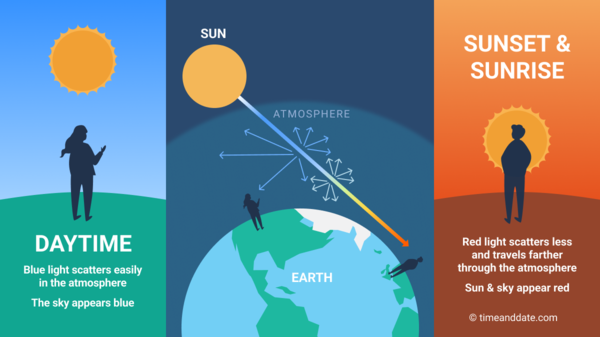Why Blue Light Scatters in the Day and Red Light in Twilight: Understanding Atmospheric Scattering
Introduction:
Have you ever wondered why the sky appears blue during the day, but red and orange during sunrise and sunset? This fascinating phenomenon is caused by a process called atmospheric scattering, which occurs when light waves interact with the particles in the Earth's atmosphere. In this blog, we will delve deeper into this concept and explain why blue light scatters during the day and red light during twilight.
What is Atmospheric Scattering?
Atmospheric scattering is the process by which light is scattered in all directions as it passes through the Earth's atmosphere. The scattered light is then redirected in different directions, leading to the appearance of various colors in the sky. The degree of scattering depends on the wavelength of light, with shorter wavelengths being more easily scattered than longer wavelengths.
Why Does Blue Light Scatter During the Day?
Blue light has a shorter wavelength and higher frequency than other colors in the visible spectrum. This means that blue light is more easily scattered by the molecules in the Earth's atmosphere, such as nitrogen and oxygen. During the day, when the Sun is high in the sky, its light has to travel through a greater distance of the Earth's atmosphere. As a result, the blue light is scattered in all directions, making the sky appear blue.
Why Does Red Light Scatter During Twilight?
During sunrise and sunset, the Sun's light has to pass through more of the Earth's atmosphere to reach our eyes. This means that the blue light is scattered even more, leading to the appearance of red and orange colors in the sky. The longer wavelengths of red light are less easily scattered by the Earth's atmosphere, allowing it to pass through and reach our eyes, resulting in the warm, reddish hues we see at dawn and dusk.
Conclusion:
Atmospheric scattering is a fascinating phenomenon that explains why the sky appears blue during the day and red and orange during sunrise and sunset. Blue light scatters more easily due to its shorter wavelength, while red light is less scattered due to its longer wavelength. Understanding atmospheric scattering helps us appreciate the beauty of the world around us and the ways in which natural processes shape our environment.
